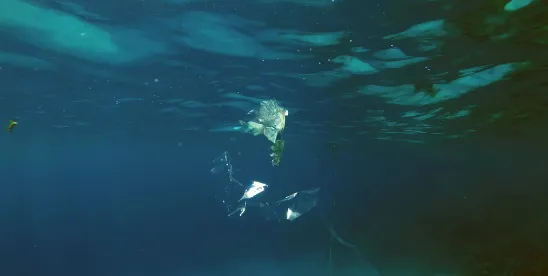On Wednesday, 10 April 2024, the US Environmental Protection Agency (EPA) announced the final National Primary Drinking Water Regulations (NPDWR) for perfluoroalkyl and polyfluoroalkyl substances (PFAS). This came one day after EPA’s release of Interim Guidance on the Destruction and Disposal of PFAS, which provides recommendations for appropriate methods to remediate and dispose of PFAS.1 As of 19 April 2024, EPA also released its long-awaited final rule to designate PFAS as a hazardous substance under the Comprehensive Environmental Response, Compensation, and Liability Act. These actions continue to demonstrate EPA’s significant focus on PFAS regulation, as discussed in our prior alert leading into this year.
FINAL DRINKING WATER STANDARDS
The final drinking water rule builds off of the agency’s proposed NPDWR released in March 2023, as detailed in our previous alert. While the final rule is generally consistent with that proposal, it includes a few additional standards, effectively imposing more requirements on what was already expected to be a very burdensome regulatory program for water systems, including approximately 49,000 community water systems, and 17,000 non-transient, non-community water systems (NTNCWS).2 The rule is generally expected to result in increased monitoring and the installation of new treatment systems for almost all water systems. The extent of these impacts will differ for each water provider, based on what monitoring they are already subject to and what treatment systems they already employ.
Standards Used in the Rule
The final rule contains three types of standards. First, “maximum contaminant level goals” (MCLGs) that set a contaminant threshold level with no known health risk. An MCLG of zero means there is no safe level of the contaminant in drinking water. Second, an enforceable “maximum contaminant level” (MCL) that sets a standard that water systems may not exceed. MCLs are generally thought to be more achievable than MCLGs but are both considered “individual” standards, in that they evaluate the presence of only one chemical.
The third standard used by EPA in this final rule is known as a “health index,” which analyzes the risk of a mixture of different chemicals. A health index is able to account for the different toxicities of each chemical and evaluate the risk of their combined levels. This is the first time EPA has used a hazard index to monitor drinking water, but it is routinely used by EPA for risk assessment in the agency’s Superfund program. This approach indicates a step by EPA to regulate PFAS using a class-based method, although the concurrent individual limits set for these chemicals may counter that prediction.
Similarities to the Proposed Rule
Similar to the 2023 proposal, the final rule regulates six types of PFAS: perfluorooctanoic acid (PFOA), perfluorooctane sulfonic acid (PFOS), perfluorononanoic acid (PFNA), hexafluoropropylene oxide dimer acid (HFPO-DA, commonly known as GenX Chemicals), perfluorohexane sulfonic acid (PFHxS), and perfluorobutane sulfonic acid (PFBS).
MCLGs for PFOA and PFOS remain set to zero, meaning there is no safe level of the contaminant in drinking water. The PFOA and PFOS MCLs have not changed either, with both set to 4 parts per trillion (ppt). This level was not expected to decrease, as it is thought to be the lowest feasible level that water systems can implement. There are still some concerns of the ability to detect PFAS at this level, however, in guidance released in conjunction with the rule, EPA states that 4 ppt for PFOA and PFOS is their “practical quantitation level” (PQL). A PQL is the lowest concentration of the contaminant that can be measured by laboratories with high certainty.3
The hazard index for PFHxS, PFNA, GenX Chemicals, and PFBS remains at 1.0. This is not surprising, as a hazard index of 1.0 or lower means the contaminant is unlikely to cause adverse health effects over lifetime exposure. Conversely, a hazard index above 1.0 indicates an increased likelihood of toxicological response to the mixture.
Differences From the Proposed Rule
While the PFOA/PFOS standards and hazard index remain consistent with the proposal, the final rule now provides individual standards for three additional PFAS—PFHxS, GenX Chemicals, and PFNA. These PFAS were previously only expected to be subject to the group-level hazard index. All three PFAS are subject to 10 ppt for both their MCLG and MCL. EPA states that these individual standards were set in response to comments that expressed concern with circumstances where one of these PFAS occurs in isolation or in levels much higher than the others. In such a case, individual testing would allow water systems to focus on a specific PFAS to remedy the exceedance.
EPA has deferred a final determination on an individual limit for PFBS so that it may further evaluate the chemical and its associated risks. Because of its likelihood to co-occur with the three other PFAS, EPA expects PFBS’ inclusion in the health index to mitigate most health concerns.
Practical Considerations
Most states do not have drinking water standards as strict as these new federal limits, so nearly every water system will be impacted. For example, Massachusetts regulates six PFAS in drinking water, but with limits of only 20 ppt. New Jersey is in a similar situation and is urging public water systems to begin taking proactive measures to comply with these standards.4 And Colorado is expected to revise its narrative policy for PFAS5 to reflect the new MCLs, which will be incorporated into state discharge permits.
The final rule is effective 60 days after the date of publication in the federal register. However, public water systems have three years to comply with initial monitoring requirements to determine the level of these PFAS in their water systems. PFAS monitoring results must also be included in their Consumer Confidence Reports beginning in 2027. Systems will then have five years (until 2029) to implement solutions if this monitoring shows exceedances. At that time, a public water system in violation of these MCLs must provide public notice within 30 days of a violation and take action to reduce these levels.
Community water systems and NTNCWS must also complete all initial monitoring within three years, but small groundwater systems serving 10,000 or fewer will be subject to reduced monitoring. Notably, water systems may utilize previously collected monitoring data to satisfy the initial monitoring requirements, resulting in cost savings.
Costs continue to be a major concern for water systems subject to this rulemaking. While EPA’s pre-publication notice advises that there are funding opportunities and many choices of treatment technology and existing treatment infrastructure, the implications of these standards will not be fully realized until facilities start implementing them. The extent of these implications are likely to have broader industry impacts in the future, as well.
FOOTNOTES
1 The guidance focuses on three technologies that destroy or control PFAS: thermal destruction, landfills, and underground injection. The guidance also discusses interim storage options, which are viewed as short-term solutions for certain PFAS-containing materials. https://www.epa.gov/pfas/interim-guidance-destroying-and-disposing-certain-pfas-and-pfas-containing-materials-are-not
2 A “public water system” is either a community water system or a non-community water system that serves at least 25 individuals daily at least 60 days out of the year. 40 C.F.R. § 141.2. A “non-transient, non-community water system” (NTNCWS) is “a public water system that is not a community water system and that regularly serves at least 25 of the same persons over 6 months per year.” Id. Examples of NTNCWS include offices, schools, factories, or hospitals that provide their own water.
3 https://www.epa.gov/system/files/documents/2024-04/pfas-npdwr_fact-sheet_monitoring_4.8.24_0.pdf
4 https://dep.nj.gov/pfas/epa-pfas-rule/
5 Policy for Interpreting the Narrative Water Quality Standards for PFAS (Policy 20-1).









 />i
/>i
